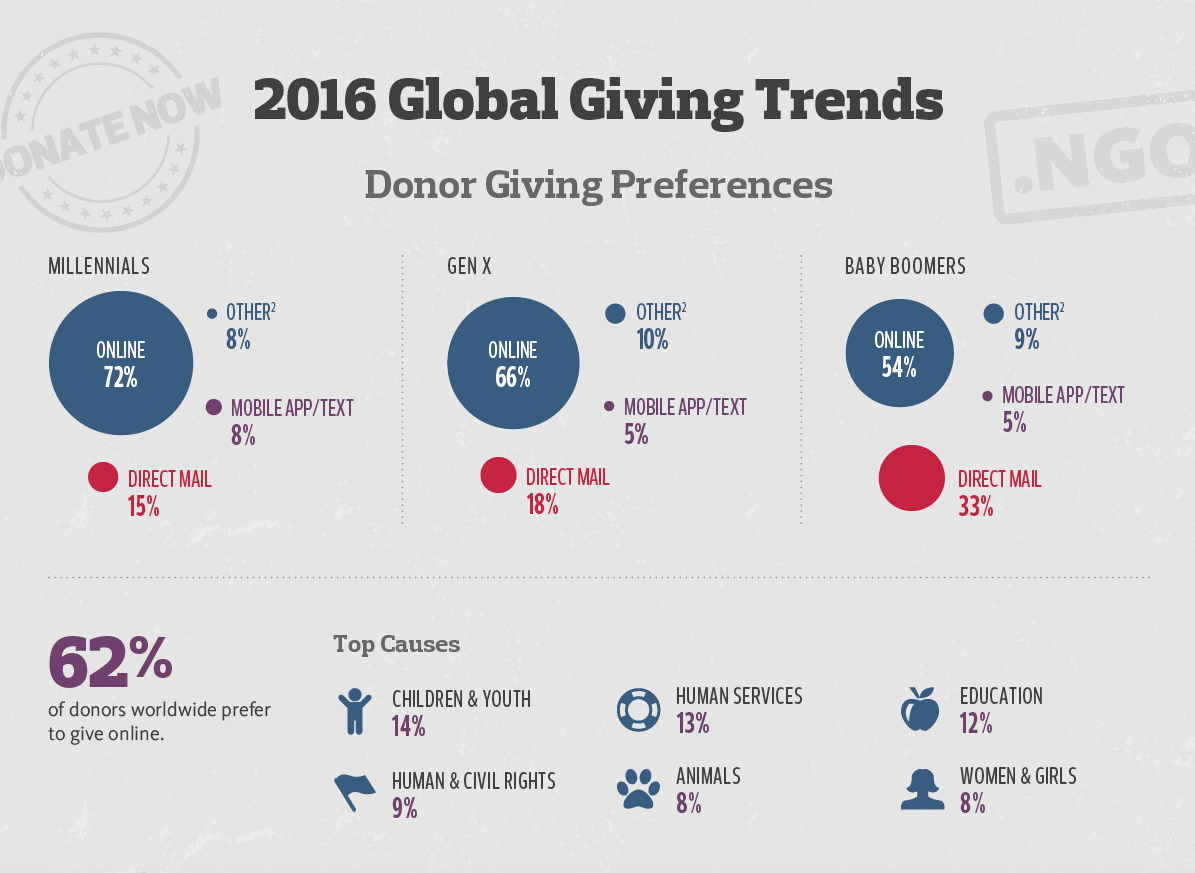A recently released report, researched by Nonprofit Tech for Good and sponsored by the Public Interest Registry, outlines how international non-governmental organizations use internet technology to communicate.
The 2016 Global NGO Online Technology Report, a collaborative research project by Nonprofit Tech for Good and the Public Interest Registry, explores how non-governmental organizations (NGOs) worldwide use online technology to communicate with their donors and fellow supporters.
NGOs and the social sector at large have increasingly harnessed online technology and services to advance their work. Yet, in countries around the world, various social, economic, and political factors limit some NGOs’ access to, and use of, online infrastructure. There is limited existing research that details and tracks disparities in the use of online technology among international NGOs, and the report hopes to shed light on these issues.
The primary goals of the report were to:
- Set a baseline of data points about NGOs and their use of online technology across continents.
-
Better understand how trends in web and email communications, online fundraising, and social media vary from continent to continent.
-
Provide a set of basic benchmarks in online technology use by continent so that NGOs worldwide have a better understanding of their own online technology use.
From September 1, 2015 to October 31, 2015, over 2,700 NGOs from 133 countries in six continents participated in the 2015 Global NGO Online Technology Survey. The survey was only available in English and was promoted across various time zones through email and social media to reach as many international NGOs as possible. Though limited by its finite language scope and other factors, the results from the survey were analyzed and collated into the 2016 report to provide what researchers deem “valuable insight into the global NGO sector and its use of online technology.”
The authors highlighted their general findings as “not surprising” but important for benchmarking further developments:
In Australia & Oceania, Europe, and North America the use of web and email communications, online fundraising tools, and social media by NGOs is high while Asia, Africa, and South America lag behind. This is not a surprising finding, but until this research the NGO sector has never been able to quantify the differences in online technology use by continent.
Worldwide, the survey found that 92% of NGOs have a website and 75% accept online donations, with Facebook (95%), Twitter (83%), and LinkedIn (52%) being the most widely used social networks.
Not only does the report provide insight into how international NGOs use online technology, it also draws on the responses of 355 donors worldwide to detail and provide infographics about global giving trends. As the authors report, the survey further “validates the growing trend to give online and speaks to the power of social media to inspire online giving, especially by Gen X and Millennials.”

Donor Giving Preferences infographic from 2016 Global Online Technology Report
Survey data and benchmarks are outlined by continent within the report. The authors stress that these results “can be used by NGOs throughout the globe to set goals for their online communications and fundraising strategies.”
In addition to the report, the partner organizations behind the study call for public input and engagement via a social media campaign:
#NGOfacts is an ongoing online campaign that highlights important data about non-governmental organizations (NGOs), nonprofits, and charities worldwide. You can join the campaign by sharing facts and stats about the NGO sector in your country using the #NGOfacts hashtag on social media.
Click here to view 25 facts and stats about NGOs worldwide.
The 2016 Global NGO Online Technology Report lays a foundation for next year’s follow up survey and report, which researchers hope to offer in three languages to enhance the results and build upon this year’s benchmarks. To download and read the full report, please click here.
To download and read the full 2016 Global NGO Online Technology Report, including detailed data broken out by continent, click here.
To stay up to date with the latest from Markets for Good, sign up for our newsletter and follow us on Twitter.
